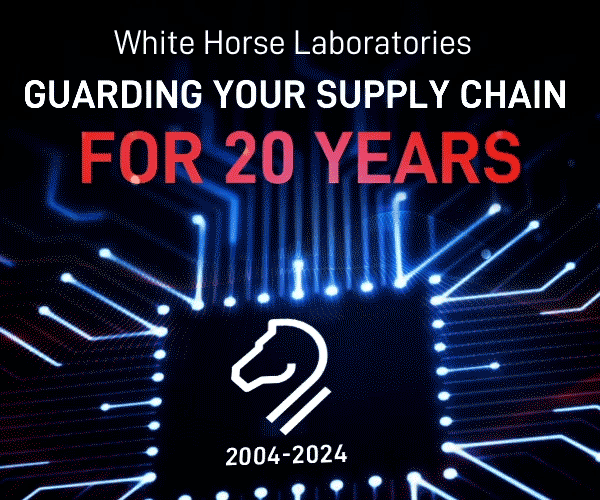RoHS, a Regrettable Substitution and Conflict Minerals: End-of-Year International Roundup

By Michael Kirschner
Originally posted on TTI MarketEye Blog
The RoHS Movement in Brazil

Brazil’s draft RoHS regulation is based on the European Union’s Directive 2011/65/EU. Its approval appears to be stalled for now, but the approval of this ABNT standard could help move it forward.
The stakeholder consultation closes on December 10, 2019, apparently after being open only two weeks. I believe it is simply a translation of IEC 63000:2016 so the short consultation period is probably not a big problem.
China RoHS “Phase Two” Gets Started
In March 2018, Announcement No. 15 of 2018 of the Ministry of Industry and Information Technology of the People’s Republic of China (MIIT) issued a “Catalog” defining which product types would be subject to substance restriction under China RoHS, along with a list of applicable and acceptable exemptions.
Since this policy came into force on March 1, 2007, China RoHS has been a disclosure-only regulation, requiring, among other things, markings as well as a table that identifies which of the six defined hazardous substances are present in the item and where they are. This announcement set the wheels of restriction in motion, but without a timetable.
As noted in my column from February 10, 2016, Article 18 of the regulation says that products defined in the Catalog will have to be “managed” via a “Conformity Assessment System.” No public information was provided about the system at the time, or during the next three years. Finally, on May 20, 2019, MIIT, along with the State Administration for Market Regulation (SAMR), finally issued the Implementation Arrangement for the Conformity Assessment System for Restricted Use of Hazardous Substances in Electrical and Electronic Products: Announcement and Annexes. These described the Conformity Assessment System’s two approaches to validating the compliance of Electrical and Electronic Products (EEPs) in the Catalog: the “state-promoted voluntary certification” approach and the “self-declaration” approach.
Either approach can be used, but the value of the “voluntary certification” (which requires the product to be evaluated by a third-party certification body) remains to be seen. We often see governments requiring such certifications as a condition of purchase (e.g. EPEAT standards are often prerequisites for bidding on US federal government purchases of certain types of electronics), so sales to Chinese government agencies are probably where the purpose and value of “voluntary certification” lies.
Products must be compliant as of November 1, 2019 (that is a date of manufacture; not a “placed on the market” date, like in the EU) and compliance information including a declaration of conformity as well as a set of documents that demonstrate compliance (not unlike the EU’s “technical file”) must be uploaded to the Public Service Platform, which is hosted by MIIT and came online in early October. Note that the mark required for self-declaration was changed in July.
One other important website to keep your eye on is the China Electronics Standardization Institute’s China RoHS page. A recent and important post solicits participation for revision of SJ/T 11364, “Marking for the Restricted Use of Hazardous Substances in Electronic and Electrical Products.” While the final date to apply has passed (Nov. 9), we know now to watch for a revision of this standard.
Draft of the European Commission’s Green Deal
On November 29, a number of news outlets reported on the “leak” of a draft of the new Commission’s “European Green Deal,” which is available at Euractiv.
While the leak caused quite a bit of commentary from NGOs and others, the draft provides manufacturers with insight into what environmental issues will be prioritized over the next five years by the new President of the European Commission, Ursula von der Leyen.
In her agenda statement published this summer while a candidate for the position, President von der Leyen had listed “A European Green Deal” as her first priority: “I will propose a European Green Deal in my first 100 days in office.”
The draft says a “communication” on it is expected to be published on December 11. Among other things, aspects that manufacturers throughout the electrical/electronic supply chain should take note of include:
- Achieving “climate neutrality” by 2050 and passing a law to “enshrine” it by March 2020
- Driving circularity and a climate neutral economy through development of:
- An EU industrial strategy
- A new circular economy action plan
- A new eco-design working plan
- A “series of initiatives for greening the ICT sector”
- “Mainstreaming sustainability … [and] A green oath: ‘do no harm’”
As reported in my previous column, circular economy and eco-design initiatives are already poised to shake up the industry dramatically. However, the computing and “ICT sector” is in the crosshairs of this new Commission.
Pay close attention to the Commission over the next few months as they begin to produce all these plans!
Are We Heading Toward Another Regrettable Substitution?
Organophosphate ester flame retardants (OPFRs) have become a commonly-used alternative to organohalogen flame retardants (OHFRs) in plastic enclosures of electronic products, as well as other components and polymeric materials. This has been the case since RoHS first restricted polybrominated diphenyl ethers (PBDEs), including decabromodiphenyl ether (DecaBDE) which itself is an OHFR.
Recently, a technical paper was published reviewing toxicological data from some broadly-used OPFRs and comparing them against equivalent data for PBDEs. What they found was that OPFRs are not an improvement: “Overall, data from traditional toxicity testing, new approach methods, epidemiological studies, and risk assessments all indicate health concerns for both halogenated and non-halogenated OPFRs,” the report states.
The concern for manufacturers is whether OPFRs will be subject to the same regulatory fate as PBDEs – and, in some cases, the entire class of OHFRs, which were recently banned in the EU for displays, monitors and TVs.
If you are currently using OHFRs and thinking of moving to OPFRs, do your research. If you’re already using OPFRs, do your research.
Let me know if you’re interested in learning more.
Cobalt as a Conflict Mineral
With increased interest in, and demand for information about, cobalt as a voluntarily-defined “conflict mineral,” the Responsible Minerals Initiative recently released version 2.0 of the Cobalt Reporting Template (CRT).
The main difference is the expansion of the list of cobalt refiners to a total of 45 – 21 more than are listed in version 1.1. Nearly 65 percent of them (29 refiners) are in China. Currently, 19 cobalt refiners are on the “Active” list and two are on the “Conformant” list.
Cobalt is commonly used in electronic products and can be found in colorants, metals, batteries and elsewhere.
Visit DCA at www.DesignChainAssociates.com or email the author with any questions or comments on this post.











